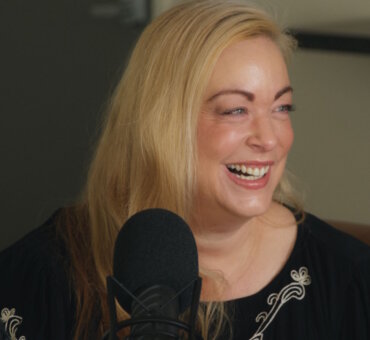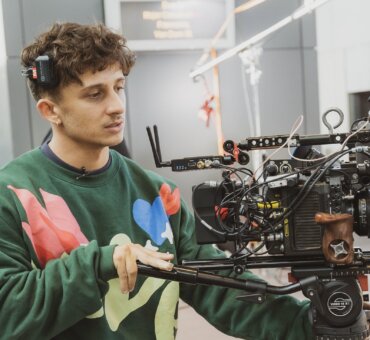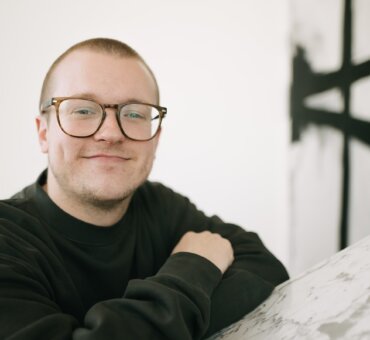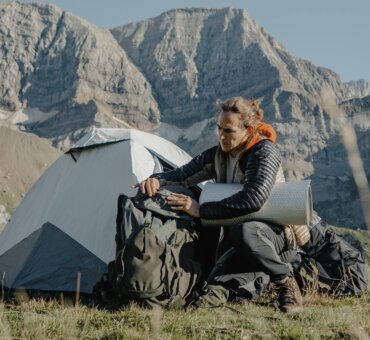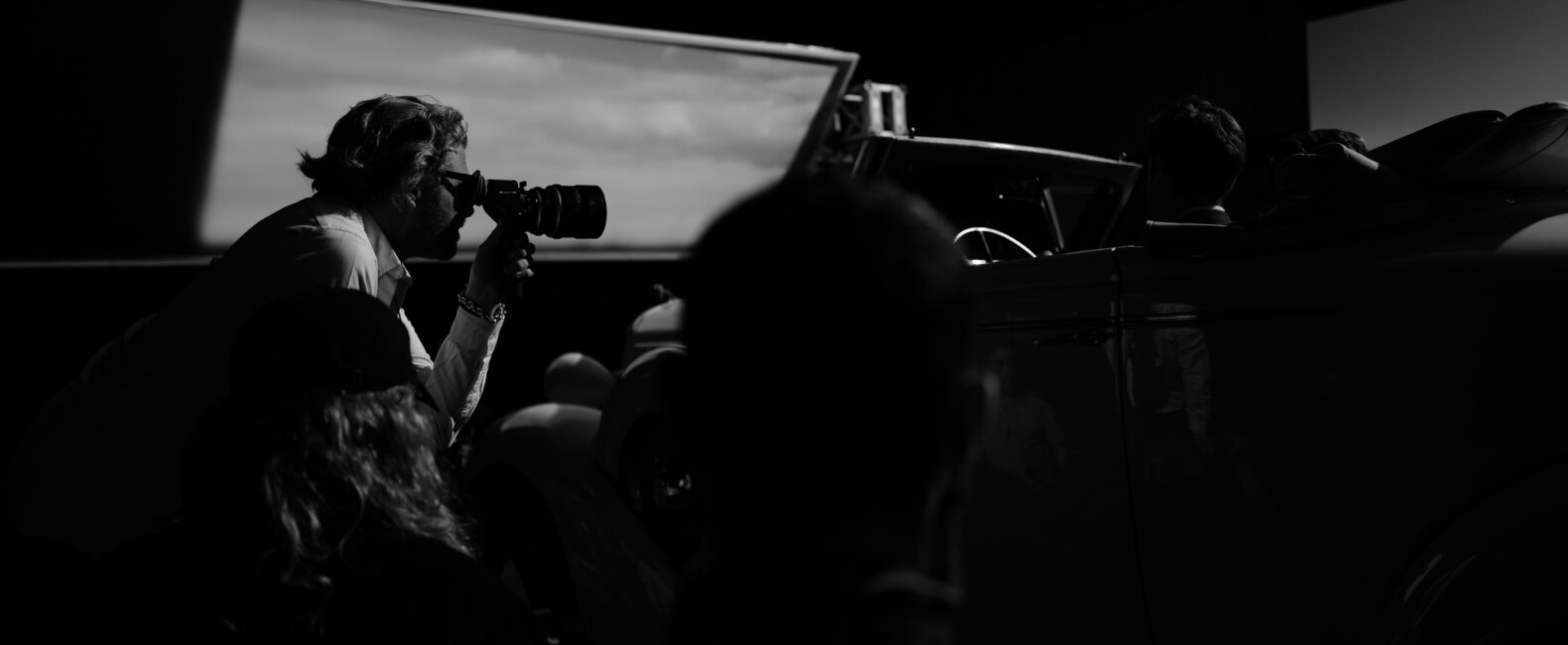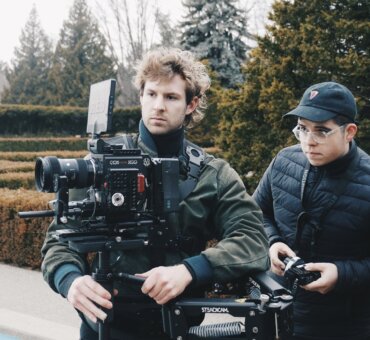It’s long been debated whether Shakespeare actually authored all of his acclaimed writings or if, instead, Christopher Marlowe was responsible for a significant amount of his body of work. And in the early 70s, a similar thesis developed: that co-screenwriter Herman Mankiewicz was in fact the primary writer on Orson Welles’ Citizen Kane. Though it’s solidly refuted by Kane scholars, the myth continues to flourish.
And now, Director David Fincher arrives with Mank: a screenplay by his late father about Herman Mankiewicz and his development of the screenplay for Citizen Kane. After a six-year feature film hiatus, Fincher tapped Erik Messerschmidt, ASC to DP, after working with Erik on Gone Girl as a gaffer and cinematographer for both seasons of Mindhunter.
Mank’s visual aesthetic is subtle, but not to be overlooked. Upon its release, the film’s cinematic elements were overwhelmingly acknowledged by critics and audiences alike. It’s an approach owing much to Erik, who saw the value in referencing the artistic quality of Citizen Kane while also developing a fresh lens through which the classic story could be seen. Mank led the 2021 Academy Awards with 10 nominations, including best picture, actor, and director, with Erik winning for Best Cinematography.
Here, we talk with him about his work on Mank.
Musicbed: Had you talked with Fincher about Mank early in its development?
Erik Messerschmidt: I knew a little about it, peripherally, during production on Mindhunter. But didn’t realize it was on the docket as David’s next project.
What were some of your initial conversations with Fincher about the project?
When we got started, there was a conversation about approaches, specifically about the danger of shooting black-and-white. It was important to me that the story motivate our choices rather than any contextual reference to Citizen Kane. Our concern was that it could become more parody than pastiche. Clearly, there are moments in the story when we derive inspiration from Kane, or tip our hat that way, but the choices had to work within a scene’s dramatic needs. I studied Gregg Toland’s work, and his contribution was indelible.
How did you decide what camera to use?
We wanted a greater depth of field, which was a nod to Toland’s work on Kane. RED’s flagship 8K camera is The Helium, and while their Monstro is also 8K, it’s a large-format camera. The Helium is more like a high-resolution 35mm sensor. We ended up shooting on RED’s Ranger, with a custom monochrome Helium sensor. It was immediately clear that a true black-and-white sensor gave much better results.
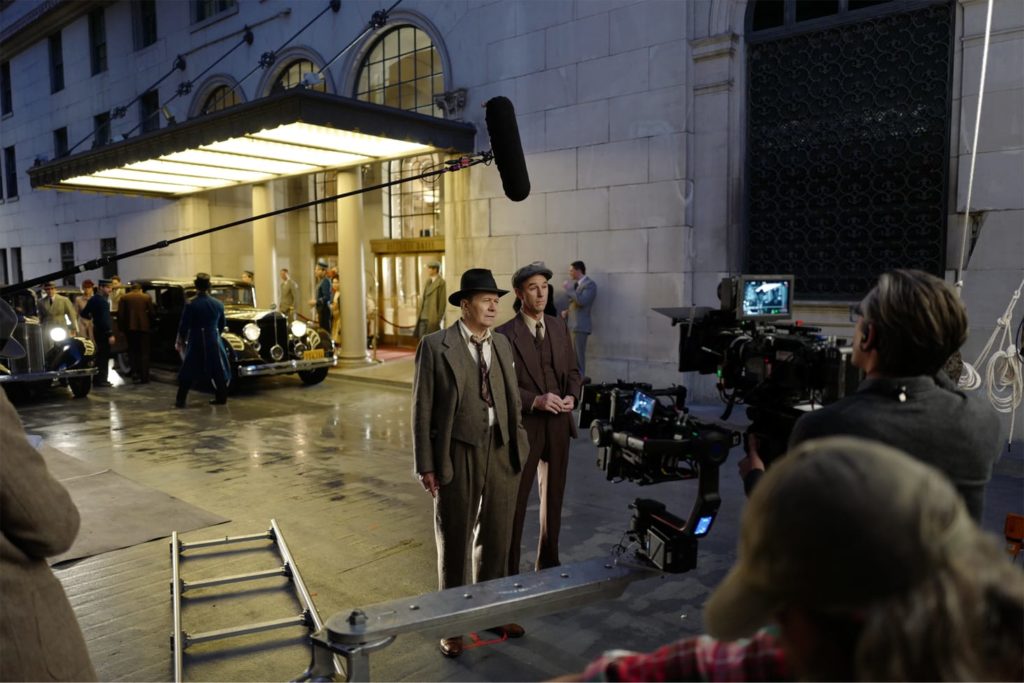
Our color temperature tests revealed that on exteriors, blue wavelengths have more of a tendency to scatter with a closed down iris. These halation artifacts on the sensor can make things look soft or unfocused. It’s similar to what happens with motion picture film under red light. So, I shot with a Harrison Orange #2 filter for day exteriors to block some of those wavelengths. That gave us added sharpness, along with better color rendition on faces.
How did your lens choices factor into the overall approach?
We wanted very sharp lenses. These days, modern lenses are almost clinically sharp, at least at a 2.8 stop. But when you’re shooting at those deeper stops – T8, T11, T16 – lenses start to dramatically underperform with respect to sharpness. That gives the impression of using vintage lenses.
This look, at those higher stops, got us halfway there for our deep-focus needs. It was achieved mainly through Leitz Summilux-C lenses ranging from 21mm to 50mm in focal length. If we’d shot on actual vintage or lower-quality glass at those stops to keep our high depth-of-field, the image quality would have been heavily compromised.
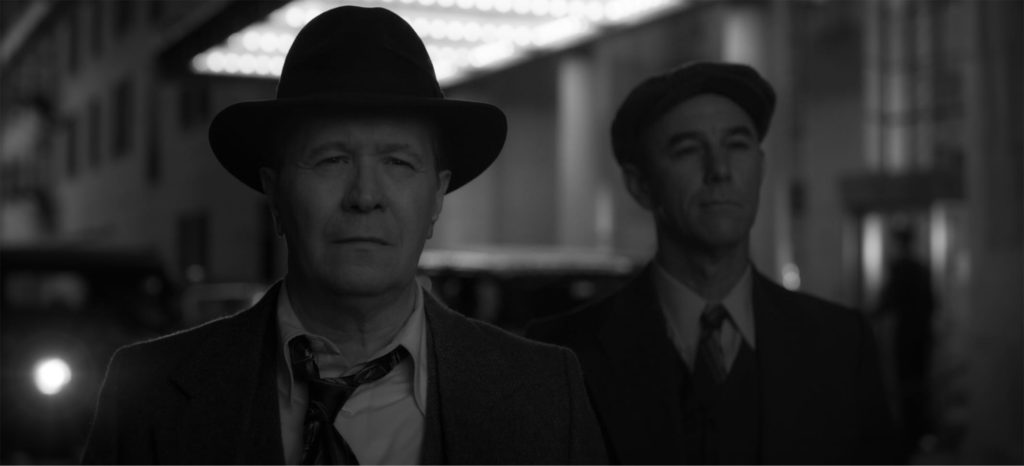
Were there any issues you encountered during your testing phase?
Costume designer Trish Summerville and production designer Don Burt were with me while we tested tiles, paint colors, fabrics, and how practical lights registered. Those were concerns because of how the B&W camera accentuates color. Two shades of green can look very different. So it was often about predictability. People with freckles can wind up with those features accentuated due to the extra UV in the air. As a result, we chose to work exclusively under 3200-degree light in interiors. If we had found sodium vapor or some discontinuous source, the tones would have looked completely different on the camera.
It was a huge voyage of discovery, figuring out which combinations worked best to obtain the desired tones. Even with a really fast ISO setting, you still need a tremendous amount of light when shooting at F/11. More than I’m used to working with. We used big incandescent Fresnels and other classic fixtures that I would not have used if working in color.
Did you develop a single show LUT?
Colorist Eric White and I built two LUTs. The first was for the day-for-night work taking place at Hearst Castle. The second was the show LUT, which had just a bit of crush so I could protect the shadows, which was important. With a camera this fast, it can be difficult to build contrast. We monitored in HDR on-set, which helped and made the grading process easier when making SDR passes.
Stretching SDR exposure to work for an HDR grade is much more difficult than going in the opposite direction. With our exposures balanced for the 1000 release, it was easy to create SDR versions. There were no surprises with the HDR at all.
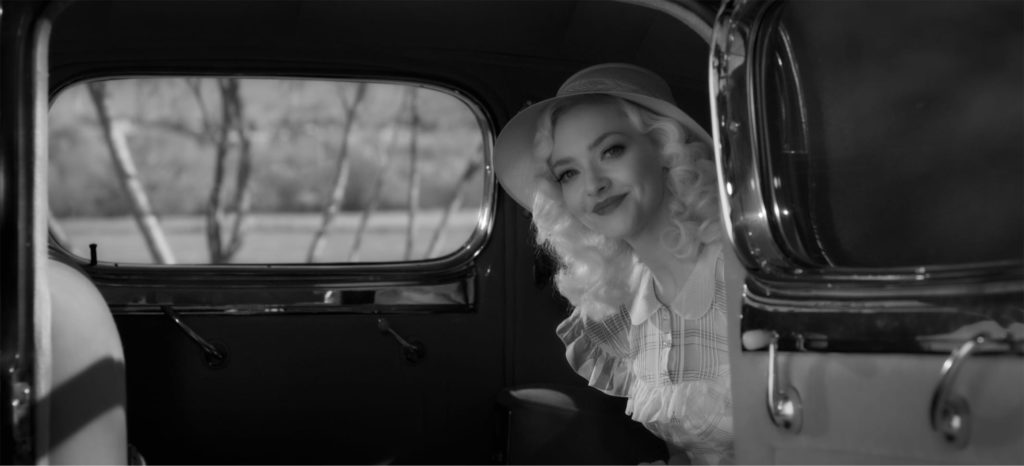
How did Fincher’s innovative visual style impact the production?
In his later work, David has been fairly classical in his camera direction. We used dollies constantly, with predetermined staging and no handheld. There was a crane for when we met Marion Davies [Amanda Seyfried] at San Simeon, but we didn’t make a lot of compound moves. There was a drop-down at the Trocadero done on a linear vertical traveler, so there’s no arc from the crane. We used another technique to selectively vary the depth of field for some scenes, using [motorized ND polarizer] Cinefade.
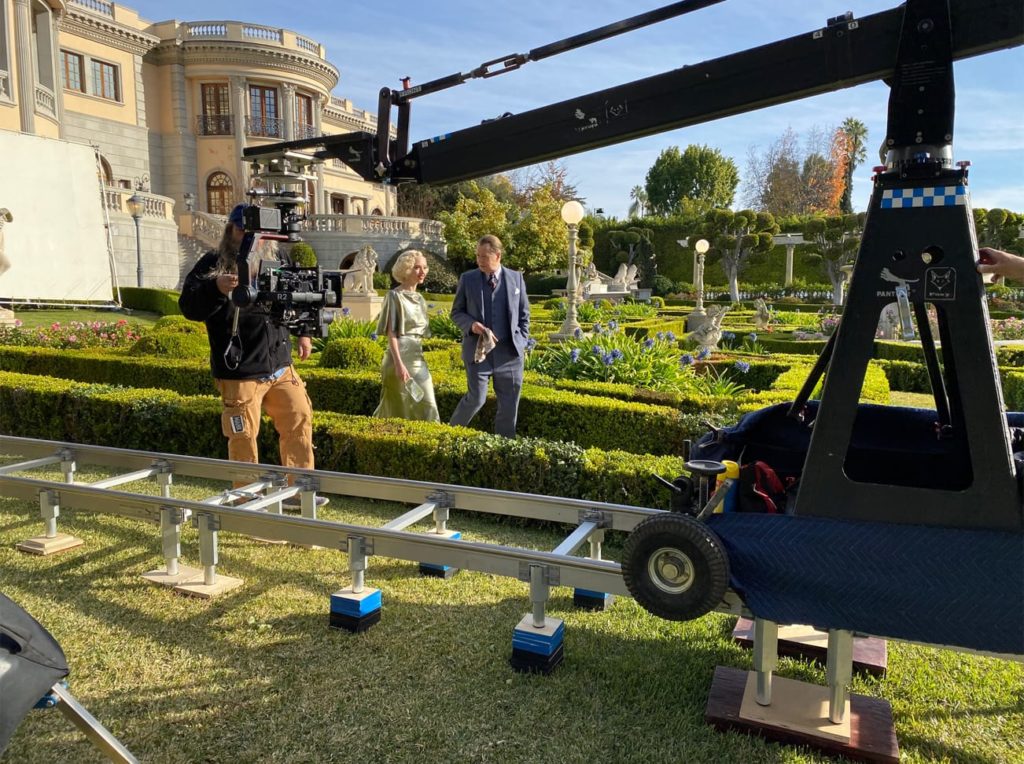
The election party sequence has a bold, dramatic look to it that stands out from the rest of the film.
Don and I discussed various ways to approach the scene. It features a lot of coverage around the table with many characters. There’s a German Expressionist aspect to the montage stuff happening. I knew if we took the approach of relighting for each shot, we’d never get the work done. So we had to light the room up while still keeping things moody and stylized.
For me, that’s the part that leans into stylization and Renoir. There’s more of a gestural quality, so it stands out from scenes before, which were more grounded in reality. We decided everybody could be side-lit by this big source at the back of the room. David liked that a lot, so Don did some reference drawings, and we wound up with scenes in the movie that look quite a lot like those renderings.
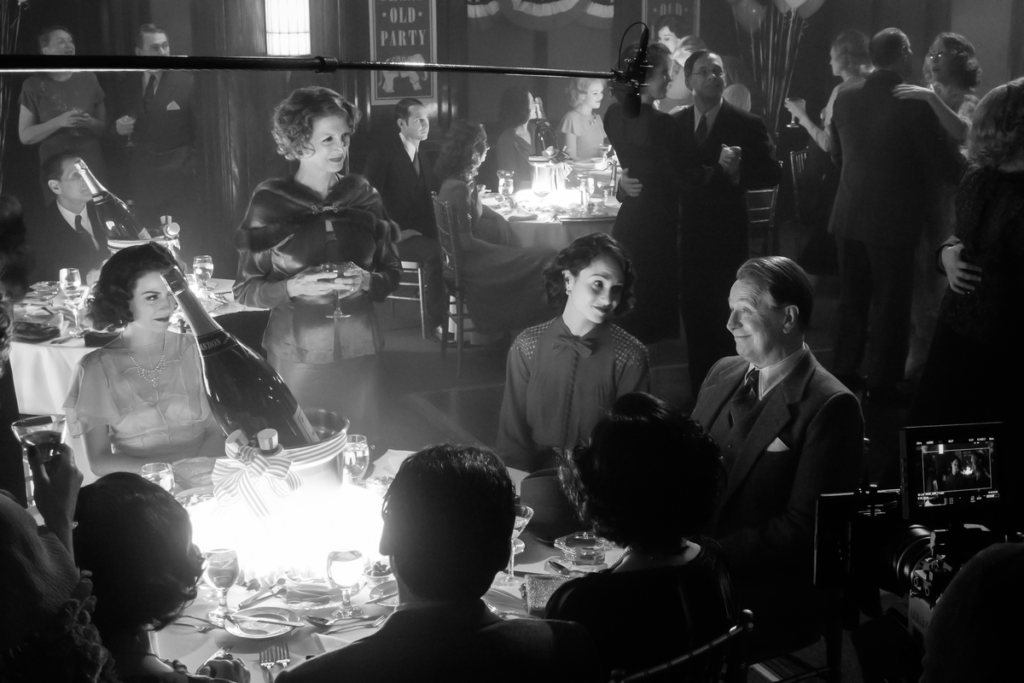
Kane is famous for many ‘invisible’ VFX shots. Did Mank use any of these same techniques?
David, being the king of oversampling, is very comfortable using VFX in atypical ways to help the visuals along. And I’m game for that too.
We looked all over L.A., trying to find a synagogue-like space with tall ceilings that looked a bit Gothic for the funeral scenes. As scripted, a shaft of light falls across the coffin. But no place had windows to motivate the light from that side. I suggested hanging a theatrical spotlight on the wall, adding smoke to create the dramatic shaft of light, and letting post put some digital windows over our light source. David, being David, was totally game. So that is what we did.
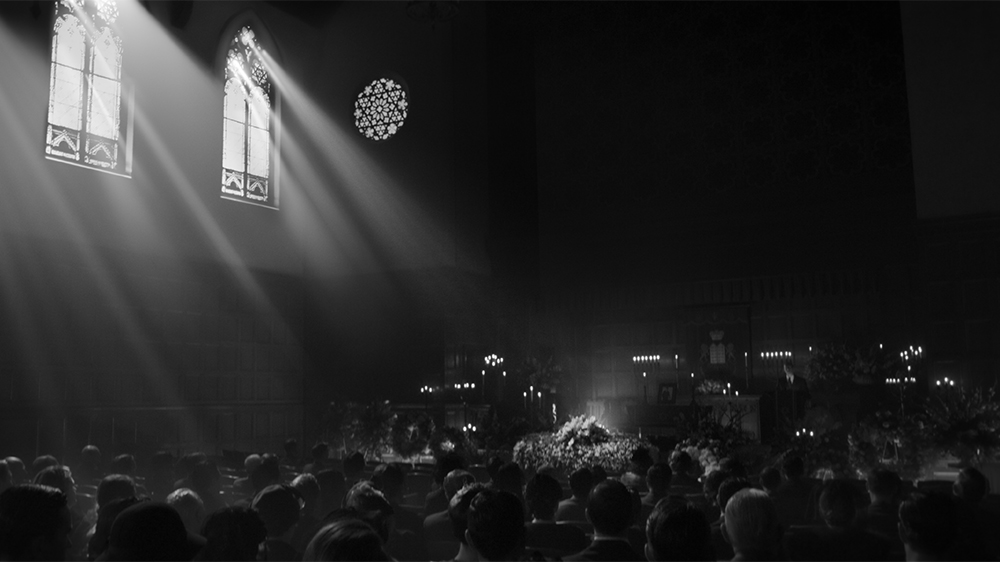
How did working with Fincher impact how you told this story?
I really appreciate how David fully understands the technical challenges of my work, more than most other filmmakers. So you don’t wind up spending a lot of time explaining why something isn’t working. That’s true for all aspects of production, not just camera. He has that ‘perfectionist’ reputation, but it is really about telling the story without distractions, which means both performers and camera operators have to be at the top of their game.
Read about the cinematography of Netflix’s The Trial of the Chicago 7 in our interview with DP Phedon Papamichael, ASC.


